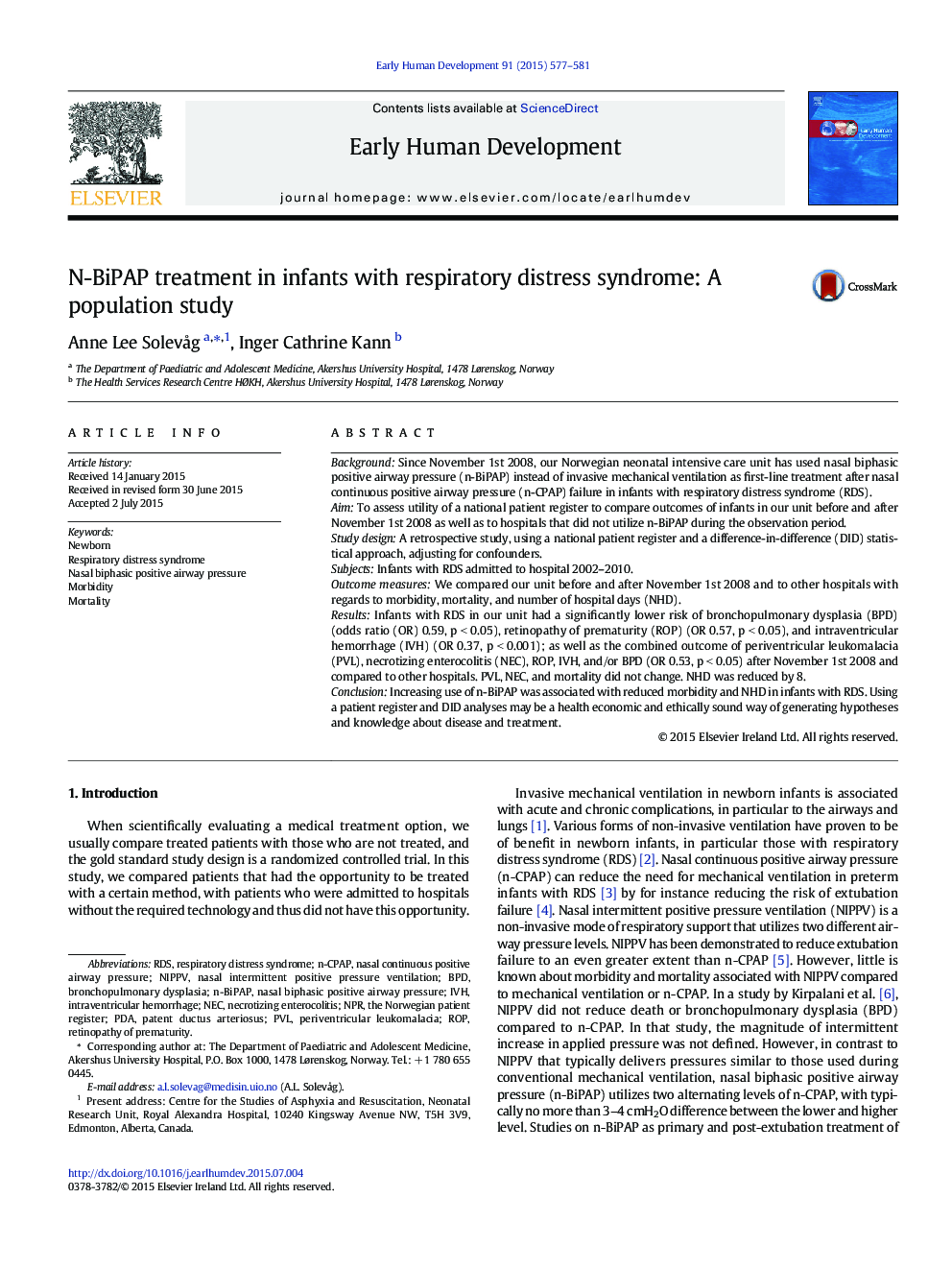| Article ID | Journal | Published Year | Pages | File Type |
|---|---|---|---|---|
| 3917734 | Early Human Development | 2015 | 5 Pages |
•A retrospective study about a change in treatment practices in a neonatal intensive care unit.•We used a national patient registry to assess the health effects of introducing n-BiPAP treatment.•N-BiPAP was associated with reduced morbidity in infants with respiratory distress syndrome.•We demonstrated utility of a statistical difference-in-difference method in medical research.
BackgroundSince November 1st 2008, our Norwegian neonatal intensive care unit has used nasal biphasic positive airway pressure (n-BiPAP) instead of invasive mechanical ventilation as first-line treatment after nasal continuous positive airway pressure (n-CPAP) failure in infants with respiratory distress syndrome (RDS).AimTo assess utility of a national patient register to compare outcomes of infants in our unit before and after November 1st 2008 as well as to hospitals that did not utilize n-BiPAP during the observation period.Study designA retrospective study, using a national patient register and a difference-in-difference (DID) statistical approach, adjusting for confounders.SubjectsInfants with RDS admitted to hospital 2002–2010.Outcome measuresWe compared our unit before and after November 1st 2008 and to other hospitals with regards to morbidity, mortality, and number of hospital days (NHD).ResultsInfants with RDS in our unit had a significantly lower risk of bronchopulmonary dysplasia (BPD) (odds ratio (OR) 0.59, p < 0.05), retinopathy of prematurity (ROP) (OR 0.57, p < 0.05), and intraventricular hemorrhage (IVH) (OR 0.37, p < 0.001); as well as the combined outcome of periventricular leukomalacia (PVL), necrotizing enterocolitis (NEC), ROP, IVH, and/or BPD (OR 0.53, p < 0.05) after November 1st 2008 and compared to other hospitals. PVL, NEC, and mortality did not change. NHD was reduced by 8.ConclusionIncreasing use of n-BiPAP was associated with reduced morbidity and NHD in infants with RDS. Using a patient register and DID analyses may be a health economic and ethically sound way of generating hypotheses and knowledge about disease and treatment.
